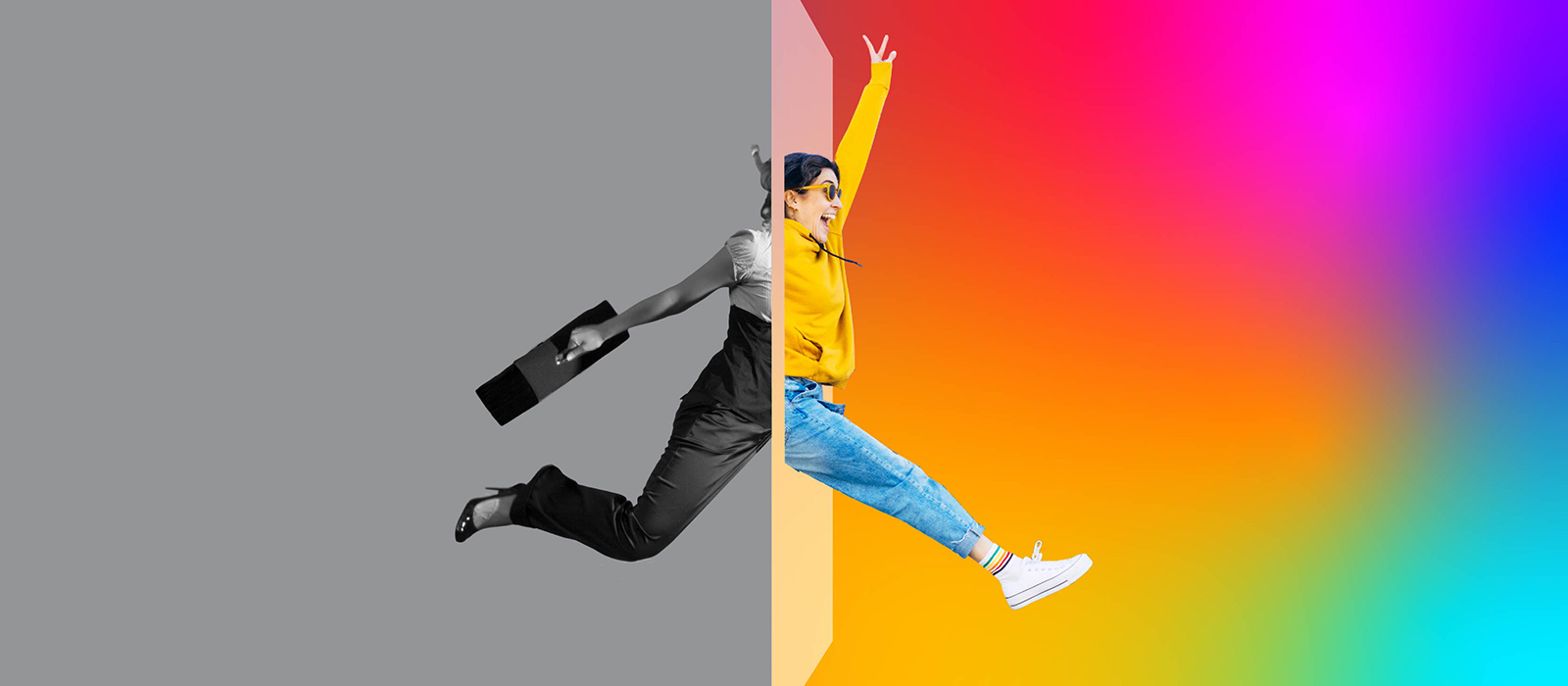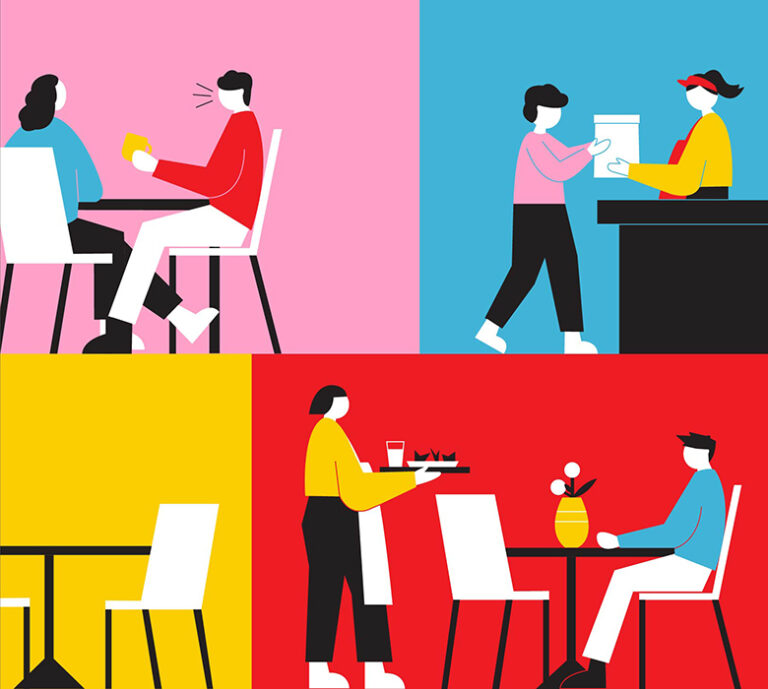×

Our Executive Director of Architecture, Glen Middleton, shares how brands should be approaching sustainable retail design.

If you’re a living, breathing human being residing on planet earth, then you know that the initial response to a threat typically goes one of three ways: fight, flight, or freeze. Our blood pressure rises, our breath becomes short, and we search for queues all around us to offer us some semblance of an answer to “what should I do next?” Without even thinking about it, our bodies experience this visceral reaction anytime a threat is perceived—and for better or worse, change, in the abstract sense, is typically received as a threat.
Why is that?
When the stock market takes a plunge, we may immediately think the world is falling apart; but in actuality it’s absolutely necessary for the health of the economy. This change in opportunity for people to “buy-in” and to right-size the real versus perceived value. When leadership changes take place within an organization, employees may be tempted to believe their job is on the line. Instead, they can take the opportunity to appreciate the past, then get excited about the future potential of new visionaries.
Is it because we believe that change most certainly means permanent loss of self or identity? Or is it because we simply can’t envision far enough down the road to frame it as a potentially positive outcome? In some small way, resistance to change could be viewed as a lack of imagination or creativity. With regard to brands, this could also mean a distrust of your customer’s loyalty. The line of thinking goes: “If we take a risk, shake things up, and try something new, they will leave us in droves.”
Whatever the case, if you are at the helm of a brand during economic uncertainty, a company restructuring, a rebrand, or an entry period into a new market, then you have likely experienced the transformation inherent in this process.
From what we’ve seen, this mistaken perception of change (too risky!) stunts a brand’s growth that wants to win in a competitive market: the death knell for any shot of having impact on the hearts, minds, and pocketbooks of its customers.
Remember Blockbuster? Too slow for its own good, ultimately dethroned by a combination of the 2008 crisis and Netflix because they dug their heels in—instead of using their trusted name and loyal customer-based to break into greenfield opportunities. Instead of being open to the idea that consumers could easily change their movie rental habits if offered a better alternative, Blockbuster assumed the “wait and see”, or skepticism, posture.
Would Blockbuster have survived if the leadership had decided to make bold moves like buying Netflix for a mere $50M in 2000, nearly a decade prior to the retailer’s ultimate demise? At the time, they believed that aligning with a novel and cool brand was too much of a risk, and they lacked the foresight to understand Netflix’s competitive advantage. Perhaps if they had seen risk-taking as the only way up, instead of a last-ditch effort only employed when no other choices were on the table, the brand would still be a household name. They blocked out the idea of change until it was too late, and went bust.
When brands place risk-taking in the last-ditch effort category, it’s typically too late to encounter effective change.
When we lead brands through the creative process of change, we typically remind them that change is less of a threat (i.e. risk), and more of an opportunity to reframe their thinking and enact their imagination. As strategists, we accompany them through the process of identifying the “why and the wow” of their brand, so they can fully appreciate how customers and the broader marketplace should view them.
The why question, while seemingly lofty, unlocks differentiation, and provides the framework for everything a brand lives and breathes. It helps brands orient their entire organization toward a vision of why they exist; when people (employees, partners, customers) understand the why, then subscribe to it, a brand becomes strong and foundationally intact.
But the wow is something entirely different.
When we challenge brands to express their wow, and what it means to them, we are asking them to illuminate their “cool factor.” This idea is generally associated with brands across categories including Apple, Nike, Fenty Beauty, Miu Miu, Lululemon, Cash App, and Soho House. Many of these brands, at the height of cool, were founder-led—and this often leads to a cult-like following, and “cool by association.”
It’s hard to describe, but in people, we know it when we see it: a kid walking down the street in New York with his headphones on, fully immersed in his world, with a pep in his step; or a starlet walking into a restaurant dressed in casual wear, donning sunglasses as she glides into a corner booth. Her je ne sais quoi is not easily defined, but it’s heir apparent.
So, how do brands create and develop a cool factor? Can it be done intentionally, or does it just happen?
From where we sit, the answer is simple: every brand, from fast-casual restaurants to toilet paper companies, can 100% develop a wow. First, they must understand their why; then, they must be willing to take risks and do things differently.
A good example of wow in action is what Casper did for the mattress industry. The founders took the most mundane of all products, and brilliantly re-imagined the process of pricing, purchasing, and delivering mattresses. The brand blasted onto the market at the height of the “tech-enabled startup” phase, and quickly grew into the mattress of choice among young Silicon Valley and New York startup founders and employees. With a growing-cohort of digital natives at the helm of the consumer buying, Casper easily captured market share away from its sleepy competitive set, and essentially blew open a market opportunity for the entire category.
The reality, whether we want to accept it or not, is that people make purchases based on a combination of pragmatism and emotion. Another variable: wanting to belong to a larger group or community of people who have similar interests and beliefs. A brand’s wow factor is a combination of aesthetics and design, along with its ability to articulate their wow in everything from brand story to visual communications.
Without necessarily knowing the brand’s why, a human on the receiving end of the brand promise is drawn to it, and remains loyal insofar as a brand can maintain the ever-so-delicate dance of their why and wow.
The moral of the story? Cool risk-taking is the future of brand growth, differentiation, and legacy.


